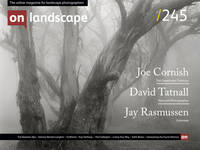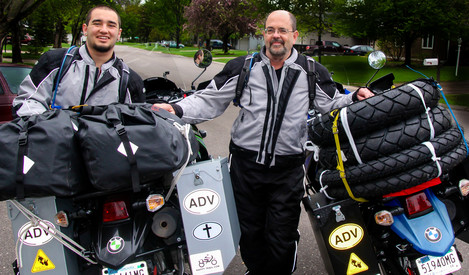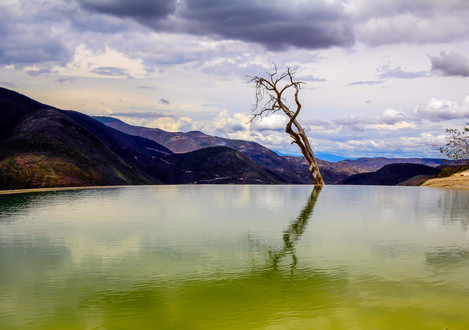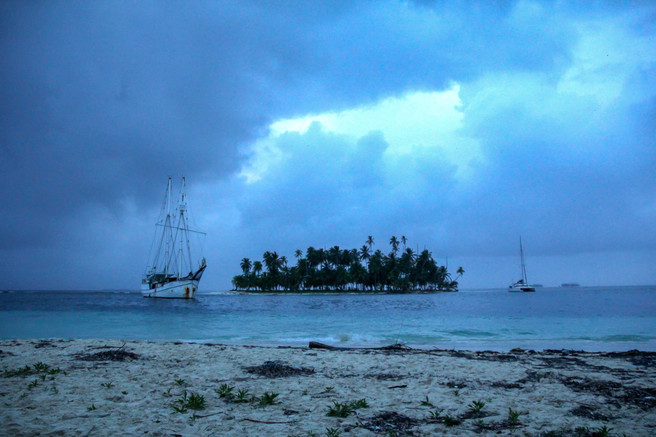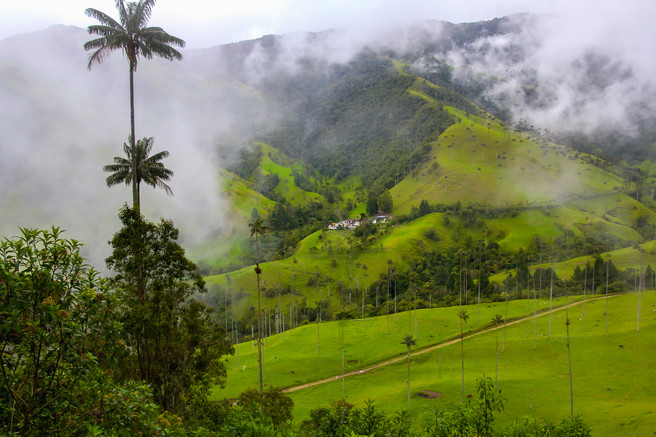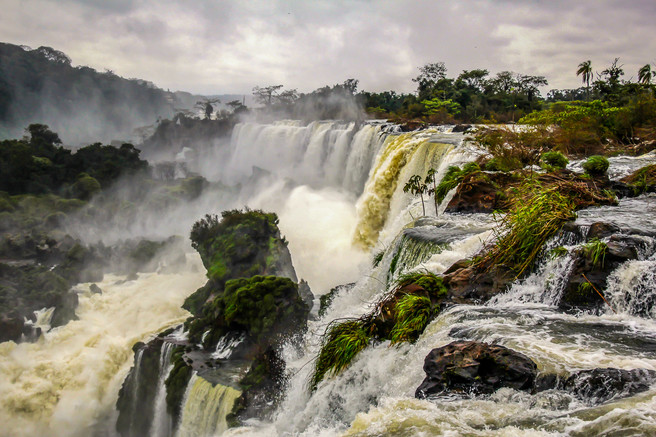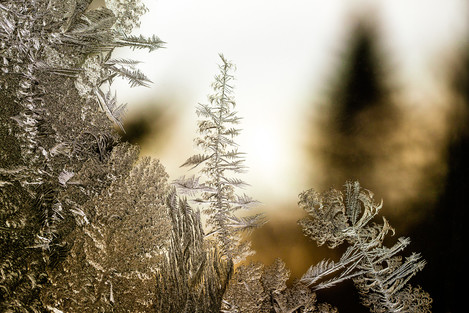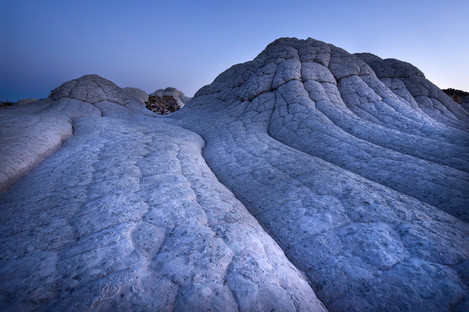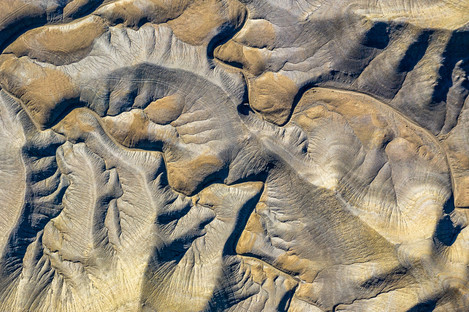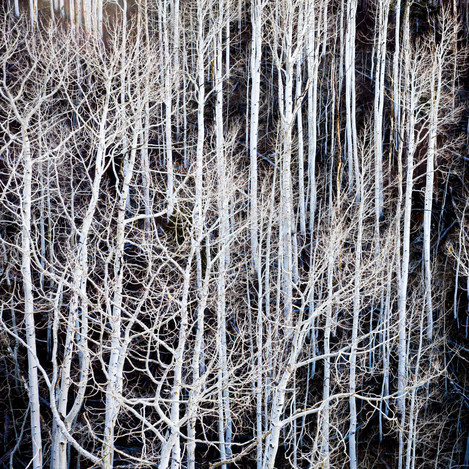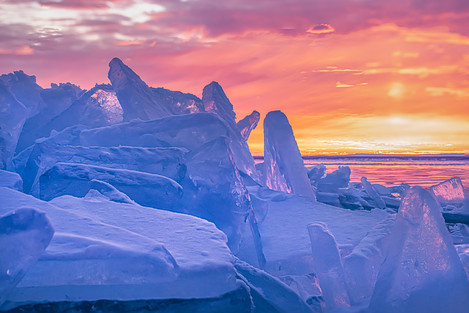Interview with Jay Rasmussen

Jay Rasmussen
Artist Biography
I make landscape, nature, cultural, and portrait images that evoke a strong emotional response in me. My images are drawn from travel experiences throughout the U.S. and Canada, Mexico, Cuba, Puerto Rico and a 12,000-mile motorcycle adventure with my son from Minnesota to Argentina. Photography helps me see and appreciate the world in a fresh way and I love seeing others connect with my work on a personal level.
Photography is a creative force in my life and I especially relish seeing, celebrating, and sharing beauty that I find in humble places. In order to accomplish this, I attempt to enter new situations with my eyes and heart open; I must switch off the world and truly experience the situation I’ve encountered.
I am a self-taught photographer and currently reside with my wife (Rose) in a 1916 farmhouse with gallery space in a converted barn in Maplewood, Minnesota. I hold a Ph.D. in Education and recently retired as a professor at Bethel University and before that I served as an elementary school teacher and principal. I’m an avid outdoors person, have hiked over half of the Appalachian Trail, lived a tent for over two years, and worked as a muskie fishing guide for seven summers.
Fortunately, my work has been featured in multiple art shows, the Mall of America in Minneapolis, MN, multiple galleries throughout the mid-west, in addition to winning numerous awards. My work was also published in the book “Reflections: Finding Beauty in Humble Places” and featured in the Minneapolis Star Tribune. I was also recently selected as a "Portrait Equality Photographer" and “Photographer Without Borders.”

Charlotte Parkin
Head of Marketing & Sub Editor for On Landscape. Dabble in digital photography, open water swimmer, cooking buff & yogi.
Planning a trip of a lifetime and taking time out of your work and busy life takes courage and vision. Courage to follow your dreams and vision of planning the locations, accommodation and transport. When Jay Rasmussen contacted me about his 71-day 12,000-mile motorcycle trip from Minnesota to Argentina I knew I had to find out more. The idea of doing such a long trip on a motorcycle intrigued me - how do you plan such a trip, evaluate the risks and plan for the unexpected?
What sparked your passion for photography?
Eight years ago, my son (19 yrs. at the time) and I set out on a 71-day 12,000-mile motorcycle trip from Minnesota to Argentina. Our friends and family were understandably concerned about our health and safety so I decided to create a trip report (complete with photos) every 3-4 days and distribute it to about 300 people via email. We just needed folks to know we were still alive and thriving as the trip unfolded!
This “Gran Adventura” was the single best event in my life and I wanted readers/viewers to see the beauty, intrigue, and curiosities we experienced on a daily basis. So, I photographed what captured my eye while secretly hoping our friends and family would come to understand Mexico and Central/South America in a fresh and personal way.
Tell me about your background and why landscape photography?
I’ve always felt a strong connection to the earth and simply put I find value in helping others see the beauty surrounding us in the natural world. Much like an animal is able to see subtle nuances in their home territory, I feel that my 68 years on the land has given me an eye for scenes others may never notice or appreciate.
As a child, my mother would take me to art galleries and ask questions about paintings that required my careful observation and deeper thinking – this experience began to shape my own aesthetic. And, my grandmother walked the ocean shores of Florida with me and we looked for shells and found beauty and patterns together.
In college had only one art course – Drawing 101. This course helped me really see and understand lines. Then, as an adult, I started to do watercolour painting on the side while on a Fulbright Fellowship to conduct educational research in Oslo, Norway. During this time I began to better understand some of the elements and principles of design that still influence my photography to this date.
You were the Professor of Education at Bethel University; how do you take your passion for learning into your photography?
A “professor” of education needs to be a life-long learner themselves and I’m wired that way. I’m happiest and most content when I’m learning and it can be about almost anything. I also like challenges and typically have a left-brain hobby to accompany my stronger right-brain concrete sequential nature. As an educator, I’ve come to understand the nature of learning and how we as photographers can fall into a trap known as an “allusion of knowing.” We think we know something, maybe even think we’re masters of it, but that is all an allusion. There is so much more to know and learn about photography and art and as a 68-year-old man, I still feel like a teenager trying to find themselves and their way in the world in a photographic sense. And, I love being on that journey as a learner!
Tell me about the photographers or artists that inspire you?
As mentioned before, I’ve been inspired by paintings. The Dutch masters have inspired me to create a series of still life images in our 1916 barn that is now converted into a gallery space. Painters such as Vincent van Gogh and Claude Monet have also inspired my use of colour. The work of contemporary photographers Marc Adamus and Max Rive provides something to think about when creating grand scenes. Sarah Marino, Jennifer Renwick, Krista McCuish, Theo Bosboom, Alex Noriega, and Guy Tal always help me think about composition/content for smaller and more intimate scenes.
A very obscure book, “The Tracker” by Tom Brown, Jr., was the most influential book I’ve ever read in terms of how I approach and see nature. This book, which mentions nothing about photography, tells of how one Apache man (Stalking Wolf) walked and became part of his surroundings. As I move with and through nature I try to be in tune with my surroundings and I view any image I’m able to make as a gift versus something that I’m taking.
When I’m on the road creating photographs I live in my van which allows me to be near locations when the light is best for what I hope to experience photographically. And, when driving I like to pass the time learning about the creative process of other photographers through some favourite podcasts such as “F-Stop Collaborate and Listen” with Matt Payne, “The Landscape Photography Show” with David Johnston, “Outdoor Photography Podcast” with Brenda Petrella, and “LensWork” with Brooks Jensen.
I make my living now by doing juried art shows which tends to immerse me in a very competitive world. My photography and the presentation of my work needs to be solid or I simply won’t make it financially and this has really fuelled my desire to improve work on a daily basis. The challenge with doing art shows is that iconic scenes tend to sell best and I still like doing some intimate work. I’ve found that if I stay true to myself, and not just sell out to the more popular images, I can still make and sell work I’m proud of.
You say on your website ”At times, I may find value in representing the objective reality in front of me and I’ll operate more in the tradition of fine documentary image-making. At other times, I may wish to express a personal response to a subject or idea.” How do you respond to a landscape and then decide on the approach you’re going to take?
Tough question. When I’m doing my best work I tend to be in a zone and I respond more from the heart than the mind. I tend to be oblivious to the outside world and totally immersed in the environment. That said, if I have a strong feeling-based response (aesthetic) to a scene I may be a little more creative with the composition and post-processing. And I may work abstractly with ICM (Intentional Camera Motion) or in a Pep Ventosa style of shooting in the round. If I have more of a thought-based response to a scene (efferent), my compositions tend to more straight forward and the post-processing is minimal.
12,000-mile motorcycle adventure
In the summer of 2013, you took a 12,000-mile motorcycle trip with my 19- year-old son from Minnesota to Argentina. What was the inspiration for the trip?
My son and I sat on the couch and watched the full saga of “The Long Way Round” with Ewan McGregor and Charley Boorman. In this documentary, we saw two men crossing the globe on BMWs and we turned to each other and said “let’s do the same thing but go from north to south.”
How did you go about planning the route? Were there certain locations you wanted to visit from a photography point of view?
Planning the trip was a two-year labour of love that involved learning about geography, culture, and history I knew very little of. I became a regular reader of trip reports on “ADV Rider” (an adventure motorcycle website) and Google Maps became my friend. Because we travelled from May-Aug. I planned a route at higher elevations in Mexico and Central America to avoid extremes in heat. And, generally speaking we stayed at lower elevations in South America to avoid overly frigid conditions.
We tried to stay with friends on the route when possible and ate and slept in locations frequented by locals vs tourists. There really weren't any locations I added to our route based on photographic interests.
What part of the trip were you most concerned about and how did it turn out?
From a planning perspective, the biggest challenge of the trip was planning how to circumvent the Darien Gap, a 66-mile non-navigable stretch of jungle between Panama and Colombia. There are no roads through this area which is extremely dangerous and controlled by narco-trafficantes. The only way around the gap is by air or sea. Fortunately, I was able to find a 1940s German fishing vessel called the Stahlratte (German for Steel Rat) that we could book passage on for us and our motos. This worked out well even though I battled sea-sickness for three days.
My other concern was bringing my son back home alive. His favourite expression was “I’m invincible” which caused me no end of concern!
What were the highlights of the trip?
The time spent with my son was “priceless” as the TV commercial says. Each night we shared our favourite moments of the day. And every day was truly unique in terms of scenery and experiences and we never knew what challenges and highlights we’d encounter next. Our motto was “The End is Nothing, The Road is All” and this helped us keep our focus on being present and enjoying each day of the trip.
You passed through so many different countries, states and cities. How was it to experience the different cultures?
Given that we only had 71 days for a trip we had to make hard decisions about where to invest our time. In order to get an emic (insider’s perspective) view of culture requires almost total immersion and I don’t feel we accomplished this. The view we had was more etic (outsider’s perspective) even though we focused more on certain countries (e.g., Colombia, Ecuador, Peru, Argentina) than others. Sadly, our trip was more of a sampler of various countries and cultures than a full entrée. My appetite was wetted, however, for more time in Colombia in particular.
Have any cultures/countries influenced your art, either through vernacular or fine art sources?
Absolutely, the freedom of expression (artistic and otherwise) in the Latin American world carried over into how I like to work in a heart and passion led manner. I also fell in love with the colours of Latin America and photography during this trip. To this day, my work is vibrant and colourful and I attribute this to our time on the road.
There were so many different landscapes from jungle to deserts to coast. Tell us about your photography in these different places. What were the highlights and challenges?
During this trip, I think we experienced every ecosystem possible in 71 days. And, in my estimation, a motorcycle is the best way to truly see, hear, smell, touch the environment. Because my son and I needed to return to the states for school in late August, we had limited time on the road and to do photography. Almost any decision I had to make about taking a photo needed to happen in 3-4 seconds as we motored 30-50 mph down winding roads complete with potholes and all forms of animal life. My highlight of the trip was finding beauty in humble places and sharing that with others.
If one of our readers were thinking about embarking upon a large project similar to yours, what insights and learnings would you give them?
Have fun with the entire process from the planning phase to the daily ride. Be open to what you’ll encounter and find joy in each day of the journey.
Your Photography
Which cameras and lenses do you like to use, and how do you approach post-processing, editing and sequencing?
Canon R5, 16-35mm, 24-105mm, 70-200mm, 100mm Macro, 100-600mm.
I work in LR almost exclusively using minimal processing. Occasionally, I work in PS to focus-stack and use a few other functions.
Over the years you have had work in many art shows. What have been your highlights of these?
I always love seeing how people respond to my work.
Tell us more about the printing and framing of the images for exhibitions. E.g. paper, size, etc
All of my work is printed with a friend on ChromaLuxe aluminium using a dye-sublimation process. I use a gloss, semi-gloss, and matte finish and each piece have a custom-made shadow mount frame on the back that I helped design. The aluminium substrate fits my style and strong use of colour because it captures the vibrancy and detail of what my eye is often drawn to.
Are you working on your next project or do you have any future project ideas that you’re thinking about?
When I was a second-year college student I took an interest inventory to get a sense of direction about what I might do with my life. The results showed that I should be an adventurer. When I read this I thought “great, how am I going to make a living do this”! As it turns out, my 30+ years as an educator and now as a full-time landscape photographer gave me that opportunity.
I’m always scheming up my next trip and this “adventure in waiting” keeps me excited about photography. I keep a file of possible locations to visit and I continually add new pieces of information to this file. When I have time to travel, either solo or with my wife, I can usually be ready to go in several days. I’ll normally only have 1-3 specific images I’d like to make in a fairly large area and then I just roam to see what attracts me. I normally scout mid-day and create most of my work earlier or later in the day.
- La Gran Aventura, Minnesota
- Hierve el Agua, Mexico
- Loading to Cross the Gap, Panama
- Stahlratte at Anchor, Carti Islands
- Valle de Cocora, Colombia
- The Road???, Peru
- Iguazu Falls, Argentina
- Creeping Blue, AZ
- Martian Skin, UT
- Ghost Trees, UT
- Farmhouse Hoarfrost, MN
- Woodland Pond, MN
- Ice Shards, MN
- Forest Portal, CO
- Farmhouse Hoarfrost, MN

